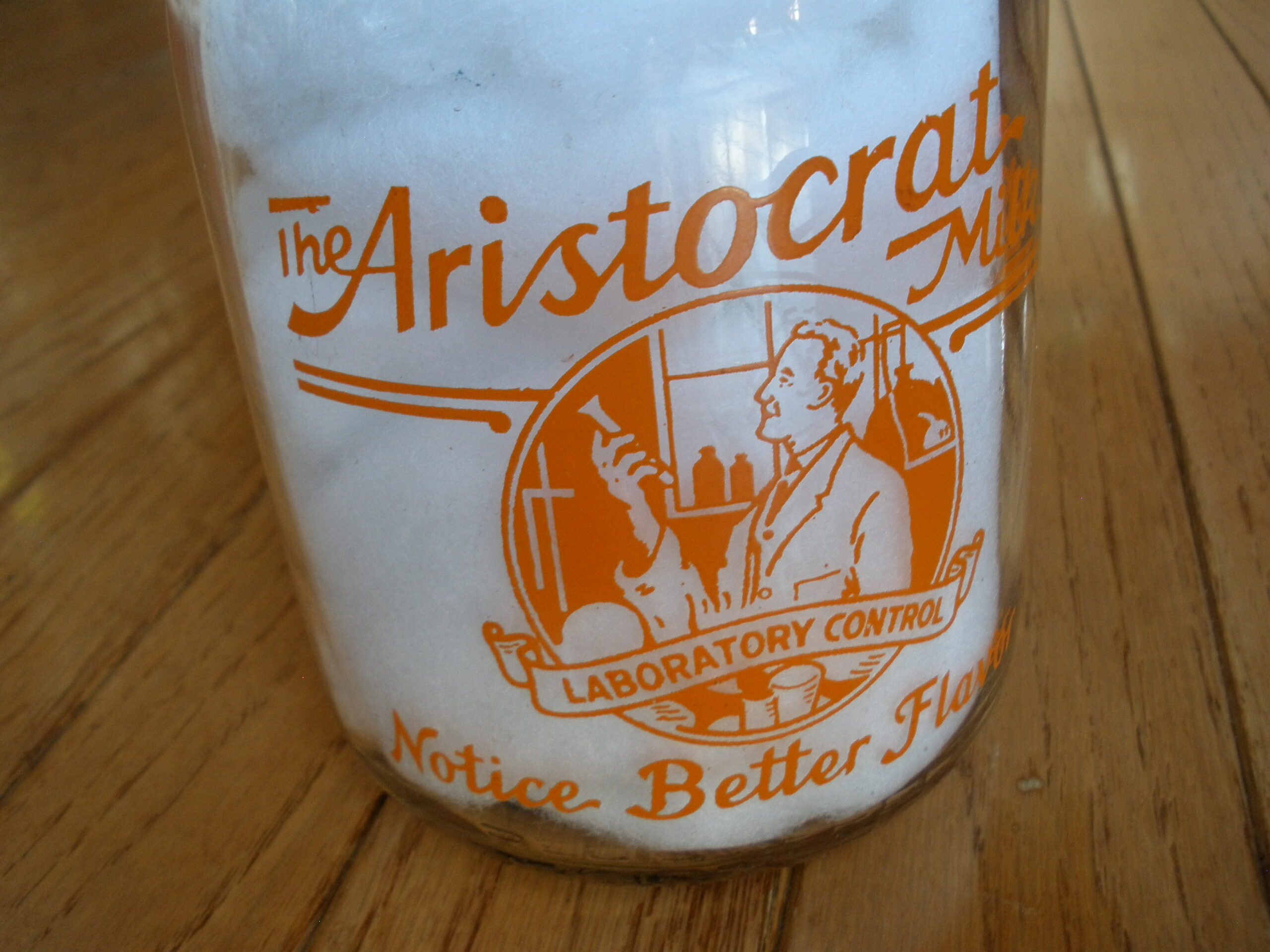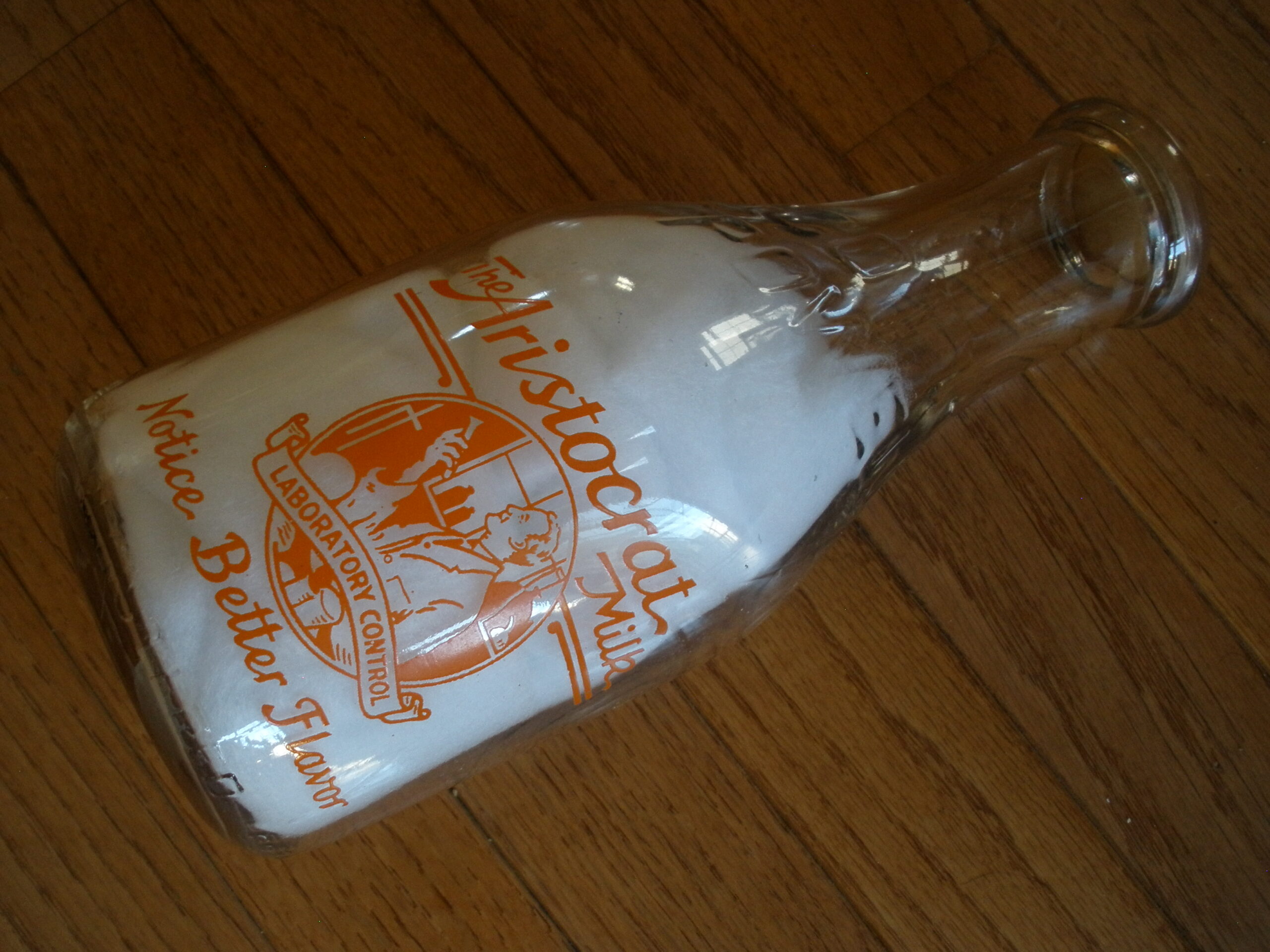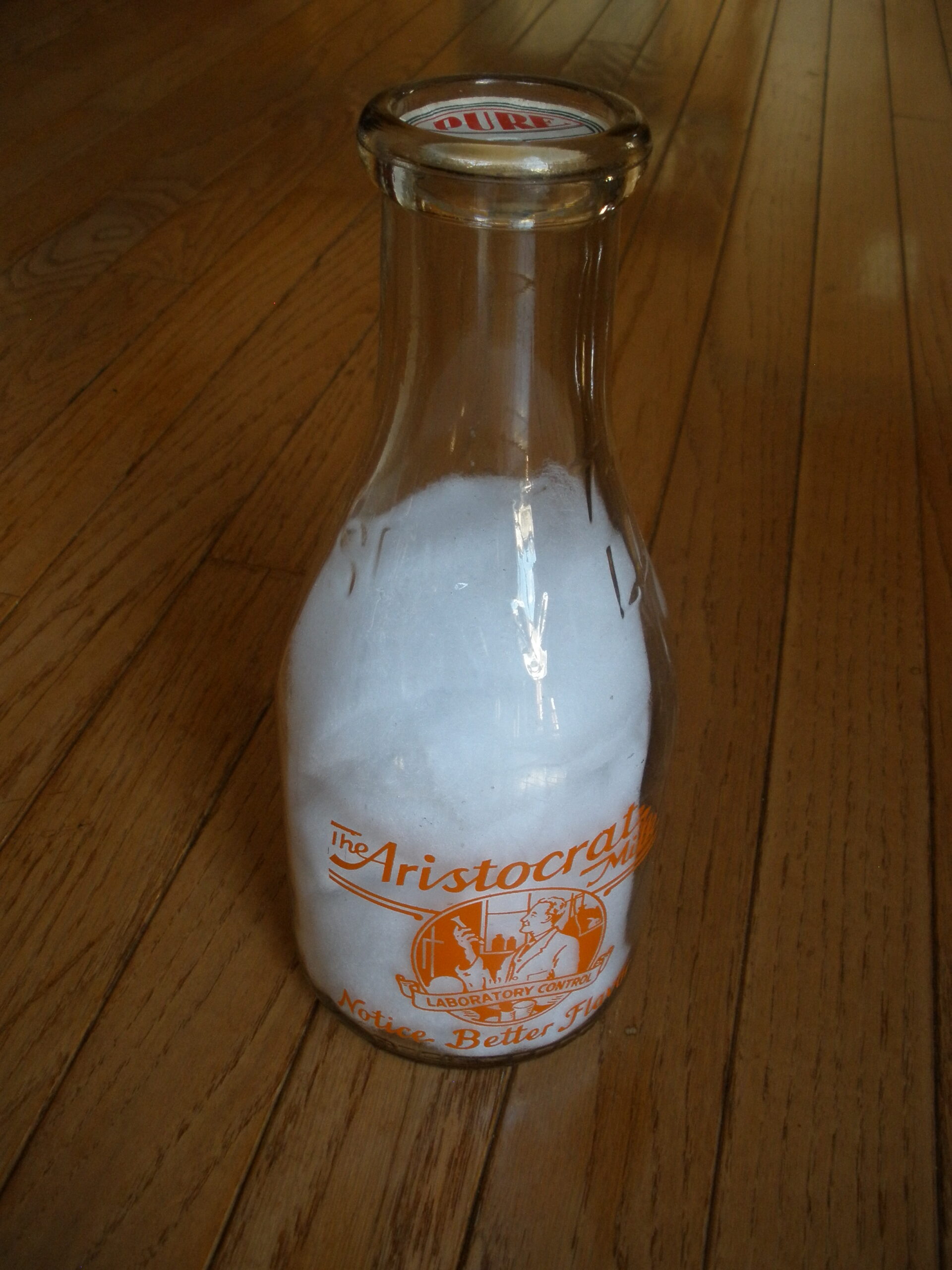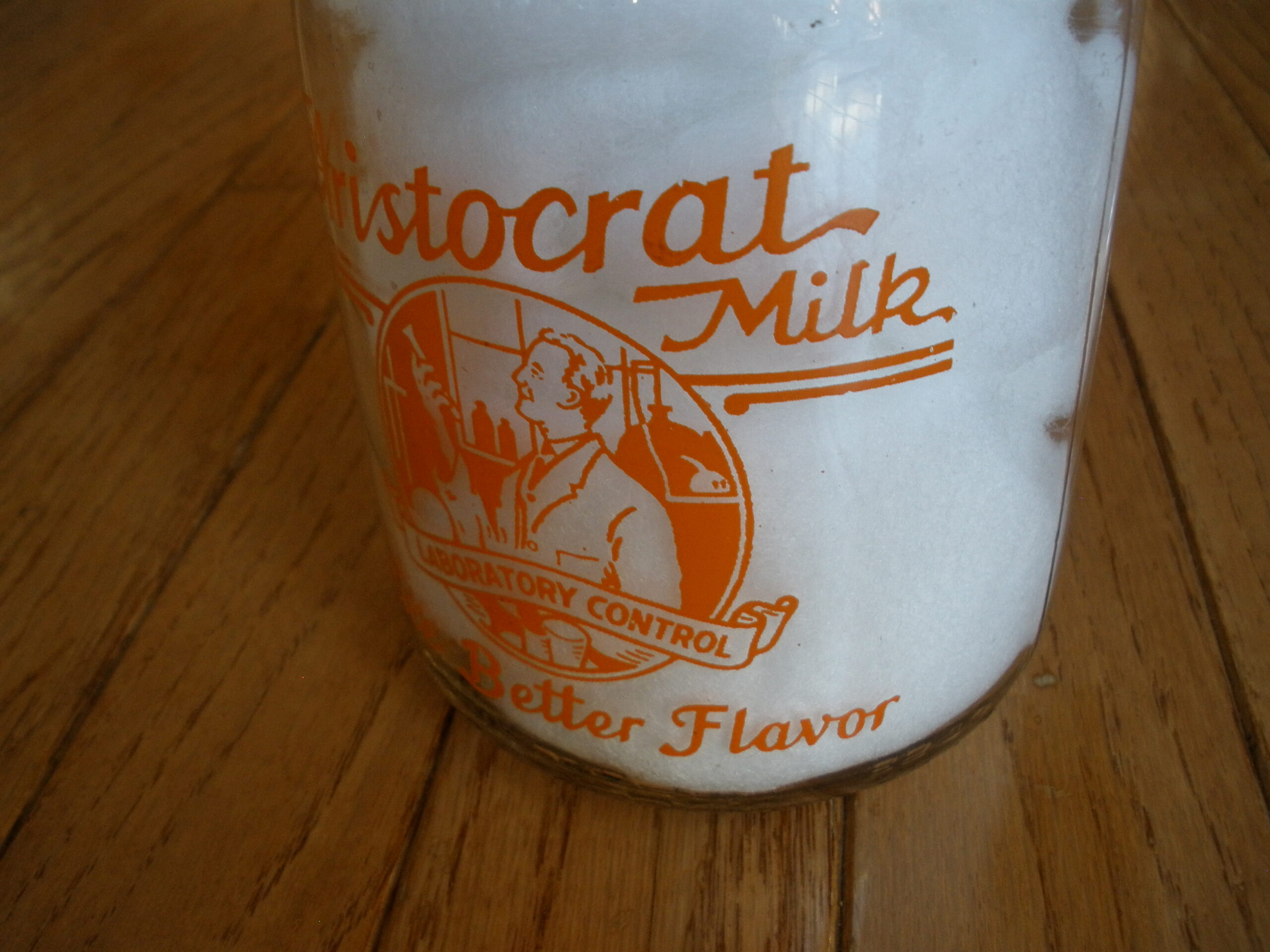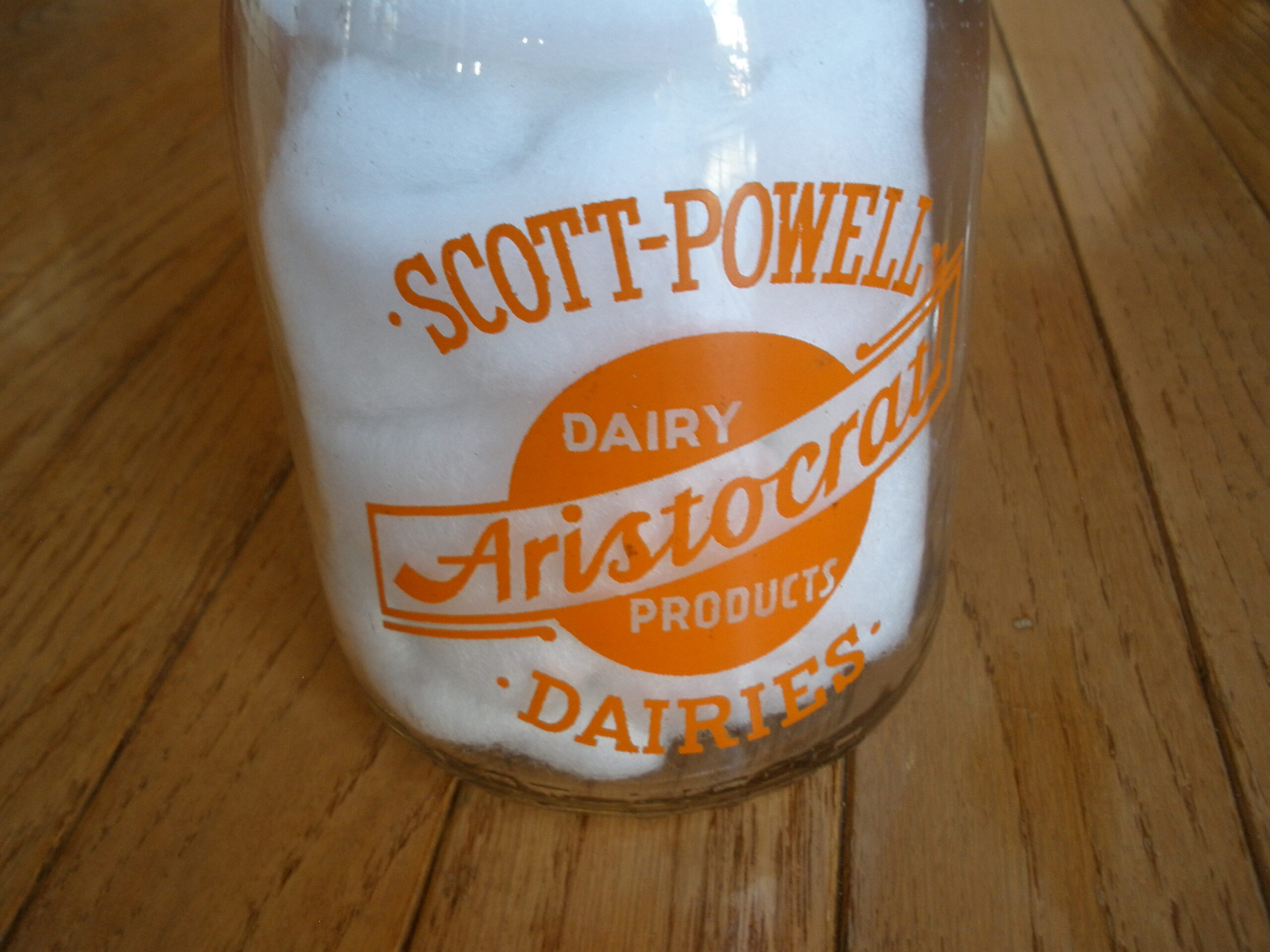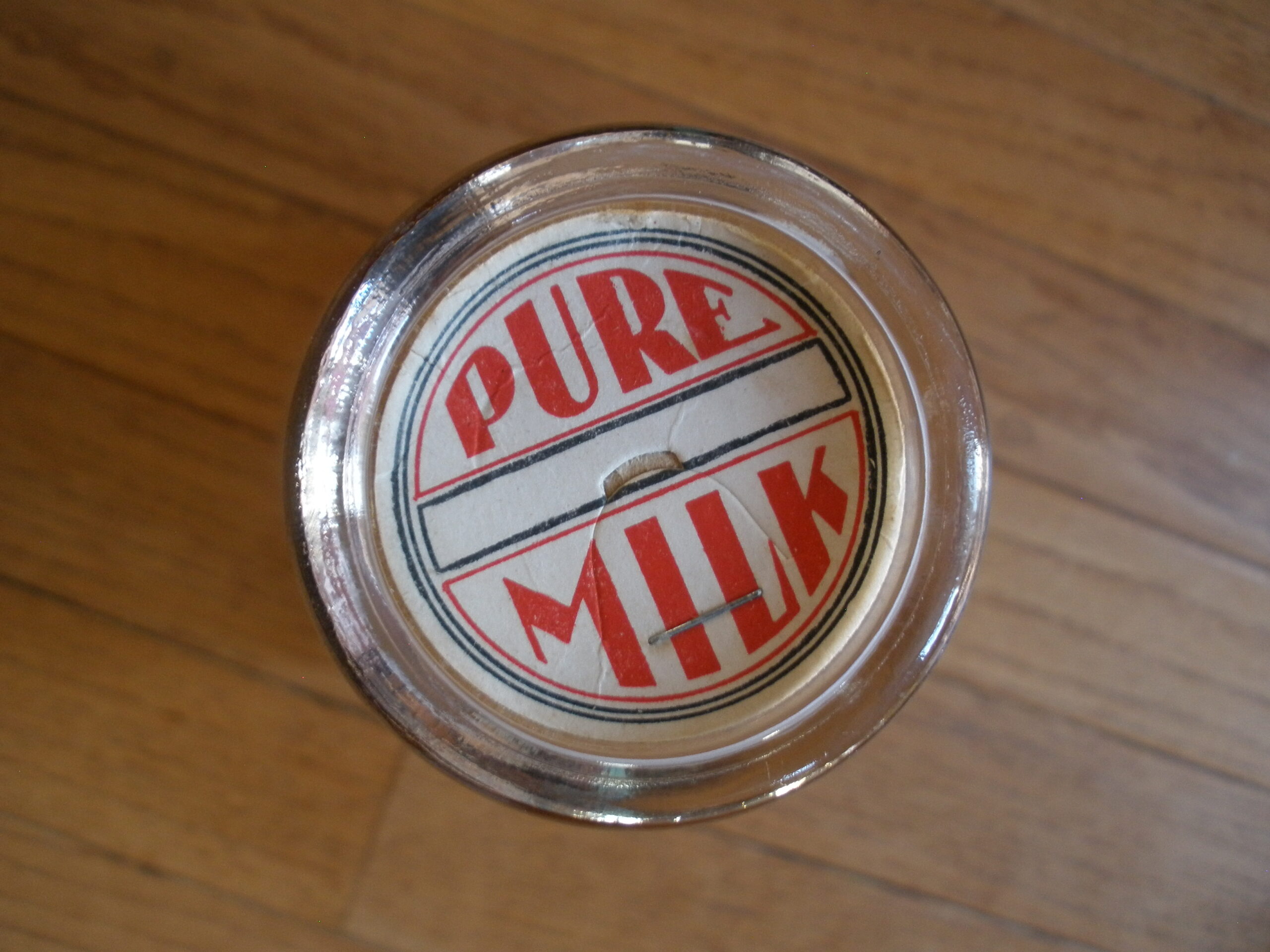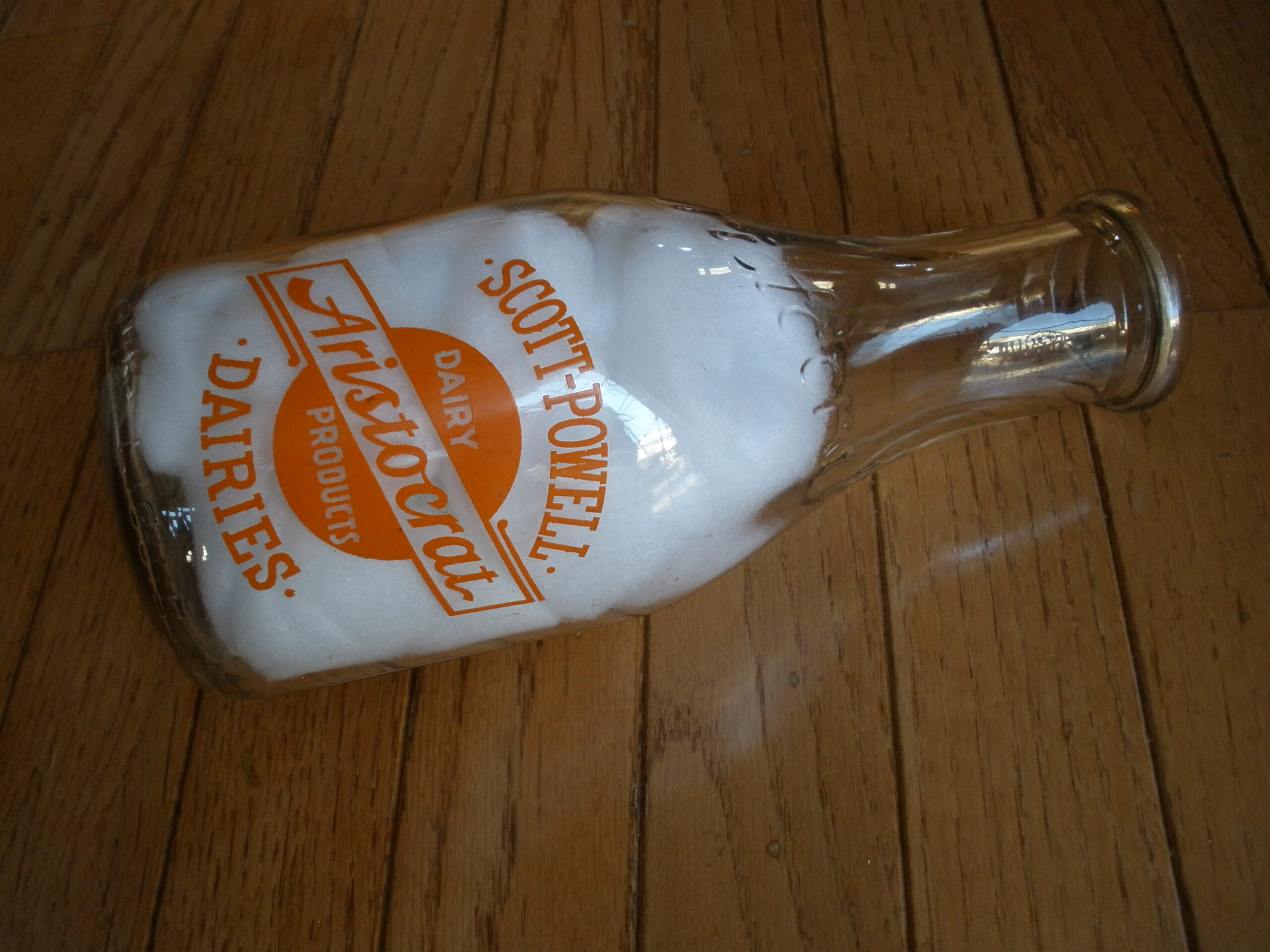For sale is a 1940s ARISTOCRAT ONE QUART MILK BOTTLE from Scott Powell Dairies, Philadelphia, Pennsylvania. This milk bottle is in excellent condition with orange lettering that reads: “THE ARISTOCRAT MILK – LABORTORY CONTROLLED – NOTICE BETTER FLAVOR”. The very unusual and detailed design on the bottle features a scientist closely examining a test tube. The other side of the bottle has a lithograph the reads “Scott Powell – Dairy Aristocrat Products – Dairies”. The bottom of the bottom has embossed “SP” letters on the bottle. The neck of the bottle also has “SCOTT POWELL” embossed lettering. The bottle is marked “3” on the bottom. Bottle measures 9 inches tall and 3 3/4 inches diameter. A great addition to your milk bottle collection!
One thing unique to dairy bottles is that they were reused many times. This was probably due to the fact that milk had a short shelf life. The consumer only needed the bottle for a couple weeks and milk was only sold locally. A United States Department of Agriculture Survey in the early 1900’s found that the average life span of a milk bottle was 22.5 trips with a range from 6 to 60 trips. The need to reuse milk bottles and prevent their theft by competing dairies drove the name for companies to brand their bottles. As a result, today, vintage milk bottles make great advertising collectibles.
In the early 1900s, many dairies used plain bottles and identified their product with milk caps stating their name. However these bottles were impossible to identify and easily stolen by competitors. One solution was to have a milk bottle made with the dairy name embossed on the glass. One way to do this was to use a generic mold with a round insert or slug plate that had the dairy’s information on it. All of the dairy’s information had to fit in this round slug plate on the front of the bottle. The slug plate on a quart bottle was usually just over three inches in diameter.
Beginning in 1933 a form of silk screening was introduced to put colored labels on milk bottles. The colored label was actually a mixture of lead, silica and borax fused to the glass at a temperature of 1200 degrees Fahrenheit for a period of four hours. Initially it cost slightly more for colored milk bottles compared to embossed ones. Later, it became cheaper and faster to use colored label milk bottles rather than cutting the new molds needed for embossed milk bottles. It also made the labels much more prominent against the white background of the milk. Some dairies felt that these brightly colored milk bottles reduced the temptation of other dairies to steal and reuse their milk bottles.

